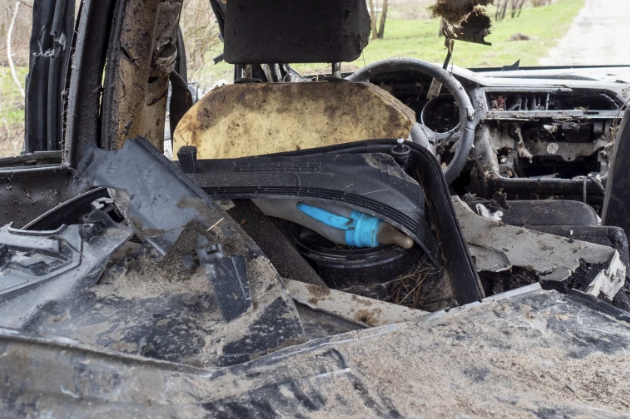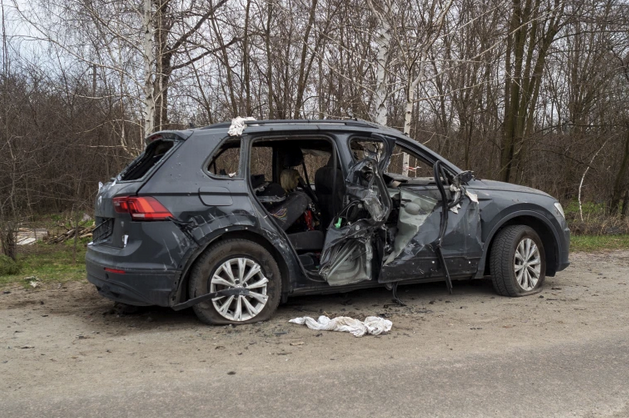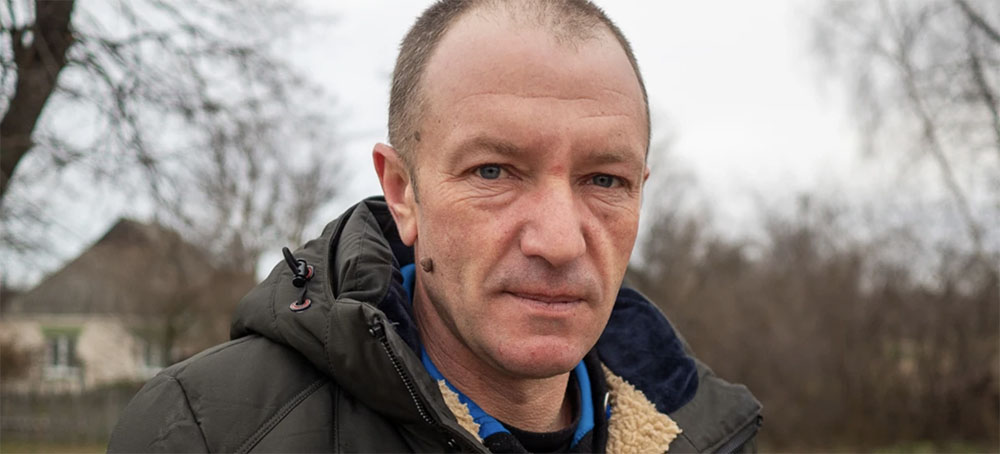Live on the homepage now!
Reader Supported News
“The Russian vehicles came up behind them and started to shoot,” said Yuriy Patsan.
But the vehicle — riddled with bullet holes, strewn with baby clothes and spattered with human remains — is a microcosm of the horror that has befallen Ukraine.
It’s also an example of the heroism that has allowed it to endure.
“It was chaos. I couldn’t feel anything. I was numb. Some people were trying to hide in my house. I was trying to pick up wounded people,” said Yuriy Patsan, 42, a mechanic, in describing the incident on March 15 that ended with the car being stranded outside his house on the edge of this small village of about 1,000 residents around 30 miles west of the capital, Kyiv.
The vehicle is now one more piece of a giant puzzle for investigators gathering evidence of alleged war crimes committed by Russian forces, a charge they deny. Moscow has also repeatedly denied that it is targeting Ukrainian civilians.
Patsan said Russian troops who had been occupying Havronshchyna had agreed to allow civilians to leave in a convoy.
He said he and his wife had packed their car and were ready to join the end of the column of vehicles as it passed by.
“They were trying to escape. Men, women and children. And the Russian vehicles came up behind them and started to shoot,” he said.
He added that none of the vehicles were driving erratically and he had no idea why the Russians opened fire.
“People were running away, and they were being shot at. I saw an old man get shot. I fled to my house. Then slowly I came back and saw the bodies,” Patsan said.
He added that when he approached the Volkswagen hatchback outside his home, he could see it had a piece of white cloth attached to it to mark it as a civilian vehicle.

Mo Abbas / NBC News
He could also see a woman bent over a toddler trying to protect it in the backseat, and an older woman and a teenager in the car, he said. They were all dead.
A male driver had lost an eye, fingers and a lot of blood and was barely alive, he said, adding that he got him out of the car and took him into his home.
As Russian patrols, guns cocked, scoured the area near his house, Patsan said he waited for opportunities to drag the bodies from the car and bury them in a shallow grave in his yard.
He made a makeshift cross, he said.“It’s tradition. Everybody deserves respect,” he added.
Over the next two weeks Patsan said he and his wife cared for the man, Alexander, as best he could, rallying the surrounding village for help. He identified the man only by his first name out of concern for his privacy and safety.
Other villagers brought what medicines and food they had, and Patsan said he called medics over the phone for advice on how to treat his patient.
“I treated him like a brother. Hugging him all the time, giving support,” he said.
Alexander did not speak much about the incident, Patsan said. But he said he came to understand that the teen in the car was Alexander’s son, and the mother and child were not related to him.
The older woman was not related to anyone else in the car and the toddler was too disfigured to know its gender, he added.
NBC News saw that the vehicle was still outside Patsan’s house on April 14, just over a month after the attack occurred. A baby bottle and baby shoes were still in the car, as well as a notebook with a shopping list for staples like milk, eggs and butter.
Police had stuck numbers next to the bullet holes on the car as part of their investigation and the bodies had been moved from the shallow grave.
Alexander had been taken to a hospital and Patsan said he was getting better.
“God was maybe guiding me. It was a miracle he survived,” Patsan said.
There are still faint blood stains on the carpet and on the pillow where he treated Alexander.
Patsan said he was fine but still needed time to process what had happened. No matter how much he washes or airs out his house, he still picks up the scent of gunfire and gore, he said.
“I can still smell it. All the time. I smell it,” he said, before picking up and stroking a kitten that was the only occupant of the ill-fated car that had emerged unscathed and which he had since adopted.

Mo Abbas / NBC News
The car outside his house is just one of many found in the suburbs around Kyiv after Russian forces withdrew this month.
A short drive away are what locals have dubbed “car cemeteries,” where piles of twisted and shot up vehicles — both civilian and military — have been collected.
Each civilian car appears to have a tragic story. Some contain school books and children’s clothes. Others walkers, medicines and bedpans. One contained a dead pet cat, another a human jawbone.
Most had white flags attached to them.
Special Coverage: Ukraine, A Historic Resistance
READ MORE
Follow us on facebook and twitter!
PO Box 2043 / Citrus Heights, CA 95611



No comments:
Post a Comment
Note: Only a member of this blog may post a comment.